Contents
- What is a Natal Chart?
- Understanding Aspects
- Types of Aspects
- Interpreting Aspects
- Aspect Patterns
- Using Aspects to Understand Yourself
- Conclusion
-
Frequently Asked Questions
- 1. Can I create my own natal chart?
- 2. Can my natal chart change over time?
- 3. What if I don’t know my exact time of birth?
- 4. Can I have multiple natal charts?
- 5. Are natal charts scientifically proven?
- 6. What can I learn from my natal chart?
- 7. Can I change my destiny revealed in my natal chart?
- 8. Do natal charts predict the future?
- 9. Can I use my natal chart for career guidance?
- 10. Can natal charts help understand relationship compatibility?
- References
-
Frequently Asked Questions
- 1. Can I interpret my natal chart without understanding aspects?
- 2. How do I find the aspects in my natal chart?
- 3. What do major aspects reveal about my personality?
- 4. Are minor aspects as important as major aspects?
- 5. How do orbs affect the interpretation of aspects?
- 6. Can I interpret aspects differently based on the planets involved?
- 7. Do aspect patterns in my chart have a specific meaning?
- 8. How can aspects help me understand my personality traits?
- 9. Can aspects affect my relationships and compatibility?
- 10. Can aspects change over time?
- References
- Read More
What is a Natal Chart?
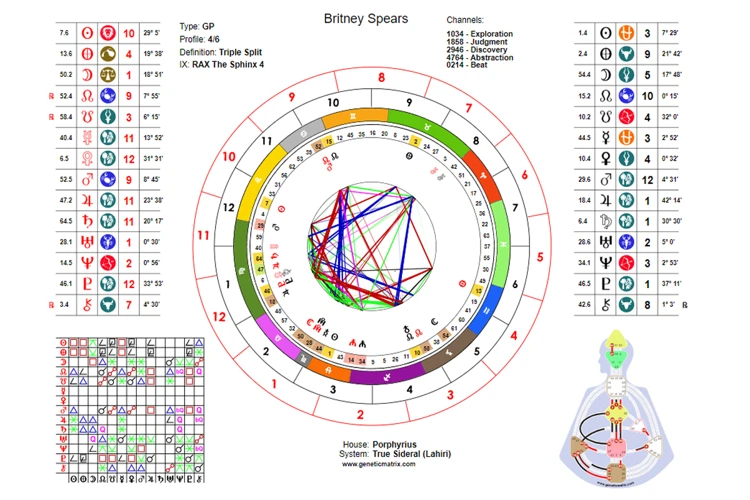
A natal chart, also known as a birth chart or horoscope, is a graphical representation of the positions of the planets at the exact moment of an individual’s birth. It serves as a cosmic blueprint that reveals the unique energies and influences present at the time of someone’s entry into the world.
At the core of a natal chart is the Sun, which represents the individual’s core essence and ego. The positions of the other celestial bodies, such as the Moon, Mercury, Venus, Mars, Jupiter, Saturn, Uranus, Neptune, and Pluto, are also marked on the chart. Each planet symbolizes different aspects of a person’s personality and life experiences.
A natal chart is divided into twelve astrological houses, each representing a different area of life, such as relationships, career, and spirituality. These houses provide further insights into how the planetary energies influence specific aspects of an individual’s life.
To create a natal chart, an individual’s birth date, time, and location are necessary. The exact time of birth is particularly crucial, as it determines the precise position of the planets at that moment.
Throughout history, cultures worldwide have recognized the significant role of natal charts in understanding individual characteristics and predicting future events. The study of natal charts is rooted in astrology, an ancient practice that intertwines celestial bodies and human experiences. By examining the configurations and aspects within a natal chart, astrologers can gain a deeper understanding of an individual’s personality and the potential events that may unfold in their life.
Understanding Aspects
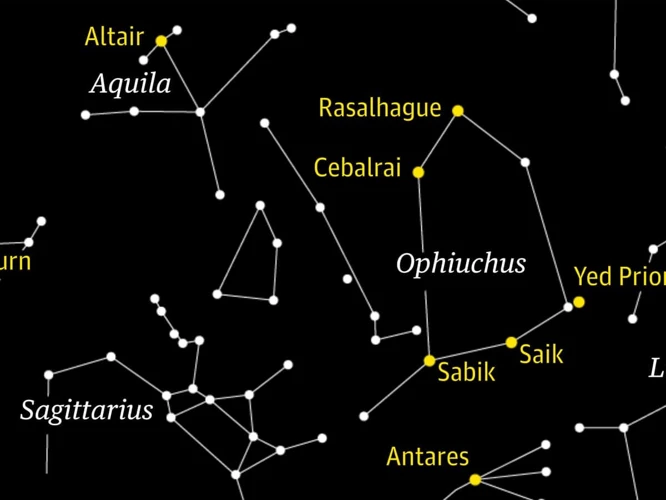
Aspects are an essential aspect (pun intended) of interpreting a natal chart and understanding the energies at play. In astrology, aspects refer to the angular relationships between planets and points in a natal chart. These relationships are measured by the degree of separation between the celestial bodies and are classified into different types based on their astrological significance.
The role of aspects in astrology is to provide a deeper understanding of how planetary energies interact with each other. Each aspect brings its own unique energy and influences to the chart, creating a dynamic interplay between the various planetary forces.
Aspects can be thought of as a conversation between the planets, with each aspect representing a different type of conversation. Some aspects may be harmonious, fostering cooperation and balance, while others may be challenging or conflicting, leading to tension or growth opportunities.
There are several types of aspects in astrology, categorized into major and minor aspects. Major aspects include the conjunction, opposition, trine, square, and sextile, while minor aspects include the quincunx and semi-sextile. Each aspect has its own unique qualities and influences that shape the overall interpretation of a natal chart.
Understanding these aspects and their meanings is essential for astrologers and individuals alike to gain a comprehensive understanding of the natal chart and the energies it represents. By considering the aspects within a chart, astrologers can uncover deeper insights into an individual’s personality, life events, and potential challenges or strengths.
Next, we will explore the different types of major and minor aspects in astrology and discuss how to interpret them in a natal chart context.
Types of Aspects

Aspects are the angles formed between planets in a natal chart and play a crucial role in astrological interpretation. They reveal the relationships and interactions between different planetary energies, shaping an individual’s life experiences and personality traits.
There are two main categories of aspects: major aspects and minor aspects. Major aspects are the most influential and significant, while minor aspects have a more subtle impact on a person’s chart.
Major Aspects:
| Aspect | Description |
|---|---|
| Conjunction | A conjunction occurs when two planets are in close proximity, creating a blending of their energies. It can intensify or amplify the qualities of the involved planets, creating a powerful influence on the individual. |
| Opposition | An opposition occurs when two planets are directly across from each other, creating a tension and polarity between their energies. It signifies a need for balance and integration between opposing qualities. |
| Square | A square forms when two planets are approximately 90 degrees apart, creating a dynamic and challenging aspect. It represents internal conflicts and obstacles that require growth and transformation. |
| Trine | A trine happens when two planets are approximately 120 degrees apart, creating a harmonious and flowing energy. It signifies natural talents, ease, and opportunities for growth. |
| Sextile | A sextile occurs when two planets are approximately 60 degrees apart, creating a positive and supportive aspect. It represents opportunities and areas of ease that can be utilized for personal growth and development. |
Minor Aspects:
In addition to the major aspects, there are several minor aspects that provide additional nuances to the interpretation of a natal chart. These include the semi-sextile, quincunx, quintile, bi-quintile, and sesquiquadrate. While their influences are more subtle, they can still offer valuable insights into an individual’s chart.
By understanding the different types of aspects in a natal chart, astrologers can interpret how the planetary energies interact and influence various aspects of an individual’s life, providing a deeper understanding of their personality, relationships, and life experiences.
Interpreting Aspects
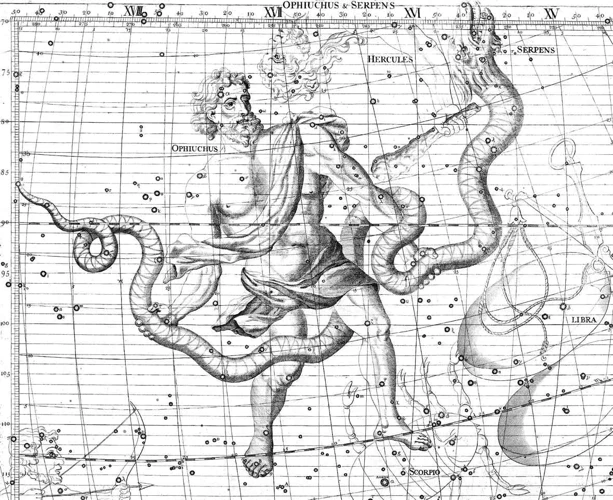
Interpreting aspects is a crucial step in understanding the deeper meaning behind a natal chart. Aspects refer to the angular relationships between the planets and other points on the chart, such as the Ascendant or Midheaven. They provide insights into the dynamics and interactions between different planetary energies.
When interpreting aspects, astrologers consider various factors, including the nature of the planets involved, the signs they occupy, and the specific angles formed between them. These factors contribute to the overall energy and influence of the aspect.
There are two main categories of aspects: major aspects and minor aspects. Major aspects, also known as Ptolemaic aspects, include the conjunction, sextile, square, trine, and opposition. These aspects have a significant impact on an individual’s chart and are the focus of interpretation.
Conjunctions occur when two planets are within a close proximity of each other, amplifying their combined energies. They represent a merging or blending of these planetary influences, which can lead to heightened focus and intensity in the related areas of life.
Sextiles occur when two planets are approximately sixty degrees apart. They offer opportunities for harmonious interactions and favorable outcomes in the areas of life ruled by the planets involved. Sextiles promote cooperation, creativity, and growth.
Squares indicate a harsh and challenging dynamic between two planets, occurring when they are approximately ninety degrees apart. They signify tension, conflicts, and obstacles that need to be overcome. However, squares also provide opportunities for growth, as they push individuals to take action and make positive changes.
Trines occur when two planets are approximately one hundred and twenty degrees apart. They represent harmonious energies and flow, bringing ease and good fortune to the related areas of life. Trines indicate talents, strengths, and opportunities that come naturally to individuals.
Oppositions occur when two planets are approximately one hundred and eighty degrees apart. They signify a tug-of-war between opposing energies and perspectives. Oppositions often manifest as external conflicts or internal struggles, requiring individuals to find balance and integration between the energies involved.
Minor aspects, on the other hand, include aspects such as the semi-sextile, quincunx, and inconjunct. While these aspects have a lesser impact than major aspects, they still offer valuable insights into how different planetary energies interact and influence an individual’s life.
Interpreting aspects involves considering the orbs, or the degree of allowance, for each aspect. Orbs determine how close the planets need to be in order to form an aspect. A tight orb indicates a stronger and more pronounced influence, while a wider orb suggests a more subtle or diluted impact.
By examining the aspects within a natal chart, astrologers can uncover patterns, themes, and major influences in an individual’s life. This information can provide valuable guidance and self-awareness, helping individuals navigate their path, understand their strengths and challenges, and make choices that align with their true nature.
Aspect Patterns
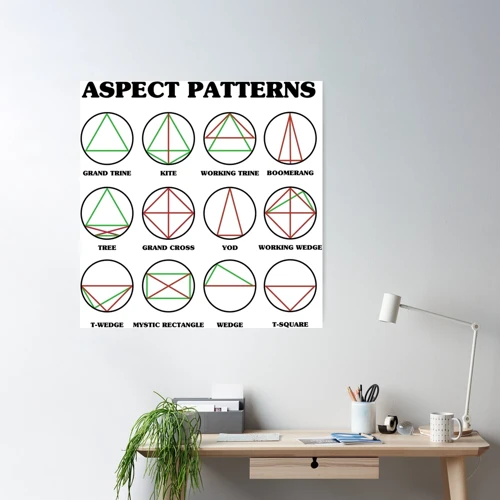
Aspect patterns in astrology refer to specific geometric arrangements formed by the planets in a natal chart. These patterns provide additional insight into an individual’s personality traits and life experiences. They add another layer of complexity to the interpretation of a natal chart and can reveal powerful dynamics and potential challenges.
One common aspect pattern is the Grand Trine, which occurs when three planets form an equilateral triangle in the chart. The Grand Trine represents a harmonious flow of energy between the planets involved, indicating natural talents, ease, and favorable circumstances in the areas ruled by those planets. This aspect pattern suggests a strong, stable foundation and the potential for great success.
Another significant aspect pattern is the T-Square, which involves three planets that form a right-angle triangle with two planets in opposition. The T-Square represents tension, challenges, and potential for growth. It highlights areas of life where there may be conflict or obstacles that need to be overcome.
The Yod, also known as the Finger of Fate, is another interesting aspect pattern. It consists of two planets sextile to each other, with both forming inconjunct aspects to a third planet. The Yod indicates a special mission or purpose in an individual’s life, often accompanied by a sense of destiny or a calling.
These are just a few examples of the many aspect patterns that can appear in a natal chart. Each pattern has its own unique symbolism and interpretation, offering valuable insights into an individual’s potentials, challenges, and destiny.
By studying and analyzing aspect patterns in a natal chart, astrologers can gain a deeper understanding of the intricate interplay between planetary energies and their effects on an individual’s life. These patterns provide a roadmap for self-discovery, personal growth, and navigating life’s challenges.
Using Aspects to Understand Yourself
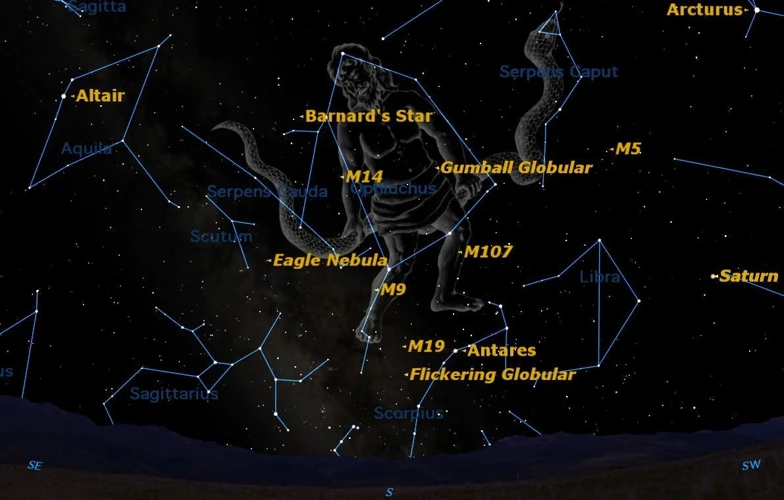
Using aspects in astrology can provide valuable insights into understanding yourself more deeply. Aspects are the relationships between different planets and points in a natal chart, and they reveal the dynamic interplay of energies within an individual’s psyche.
By examining the aspects in your natal chart, you can uncover patterns and connections that influence your personality traits, behaviors, and life experiences. The aspects indicate how different planetary energies interact and shape various aspects of your life.
For example, a challenging aspect between Mars and Saturn may indicate a struggle with assertiveness or a strong sense of responsibility, while a harmonious aspect between Venus and Jupiter could signify a natural inclination towards joy, abundance, and harmonious relationships.
Understanding your aspects can help you navigate through life with greater self-awareness and make conscious choices about how to best utilize your strengths and manage potential challenges. It allows you to embrace the unique combination of energies that shape your personality and provides a framework for personal growth and self-acceptance.
In addition to understanding yourself, aspects can also shed light on your relationships with others. By comparing the aspects between two individuals’ natal charts, astrologers can gain insights into the compatibility and dynamics of their relationship. Whether it’s a romantic partnership, friendship, or family connection, analyzing the aspects can help identify areas of harmony, potential conflicts, and opportunities for growth.
Ultimately, using aspects to understand yourself is a powerful tool for self-exploration and personal development. It allows you to embrace the multidimensionality of your being and navigate the complexities of life with greater clarity and wisdom. So, delve into the depths of your natal chart, unravel the mysteries of your aspects, and embark on a transformative journey of self-discovery.
Conclusion

In conclusion, interpreting the aspects of your natal chart opens a gateway to understanding the intricate web of energies that shape your life. By examining the aspects between planets and sensitive points, we can uncover hidden patterns, challenges, and potentials within your personality and relationships.
Major aspects, such as conjunctions, oppositions, and squares, highlight significant energies and dynamics that can have a profound impact on your life. Minor aspects, such as sextiles and trines, provide harmonious connections and opportunities for growth.
Understanding the orbs and aspect strength is crucial in accurately interpreting the influences of the aspects. Aspects with tighter orbs are generally more potent, while wider orbs may dilute the effects.
To interpret the aspects, consider the energies of the planets involved, the signs they are in, and the houses they occupy. Each aspect carries its own symbolism and offers insights into different areas of life.
Aspect patterns, such as stelliums and grand trines, provide additional layers of meaning and complexity to your natal chart. These patterns create unique dynamics and emphasize specific themes in your life.
By understanding the influences of aspects on your personality traits and relationships, you can gain deeper self-awareness and navigate your life with greater clarity and purpose. Your natal chart serves as a cosmic guide, offering valuable insights into who you are and the potential paths that lie ahead.
So, embrace the wisdom of your natal chart, unravel the mysteries it holds, and embark on a journey of self-discovery and personal growth. May your exploration of the celestial realms empower you to live a life aligned with your truest essence and highest potential.
Frequently Asked Questions

1. Can I create my own natal chart?
Yes, you can create your own natal chart using various online platforms or astrology software. All you need is your birth date, time, and location to generate a personalized natal chart.
2. Can my natal chart change over time?
No, your natal chart remains the same throughout your lifetime. However, the transits and progressions of the planets can bring different energies and experiences into your life, which may influence how certain aspects of your natal chart manifest.
3. What if I don’t know my exact time of birth?
If you don’t know your exact time of birth, it may be challenging to calculate the precise angles and house cusps in your natal chart. However, you can still gain valuable insights from the planetary positions and aspects in your chart without an exact time.
4. Can I have multiple natal charts?
No, each individual has only one natal chart that represents the moment of their birth. However, different astrological techniques, such as progressed charts or compatibility charts, can provide additional perspectives and insights into specific areas of life.
5. Are natal charts scientifically proven?
Natal charts and astrology are not scientifically proven. They fall into the realm of metaphysics and are based on the belief that the positions and movements of celestial bodies can influence human experiences and characteristics.
6. What can I learn from my natal chart?
Your natal chart provides valuable insights into your personality traits, strengths, weaknesses, life purpose, and potential future experiences. It can help you understand yourself better and navigate various aspects of your life.
7. Can I change my destiny revealed in my natal chart?
While your natal chart may indicate certain tendencies and potentials, it does not dictate a fixed destiny. You have free will and the power to make choices that can shape your life path differently than what is suggested by your natal chart.
8. Do natal charts predict the future?
Natal charts do not predict the future with absolute certainty. However, they can provide insights into the energies and possibilities that may arise in your life, allowing you to make informed decisions and navigate your path accordingly.
9. Can I use my natal chart for career guidance?
Yes, analyzing your natal chart can provide insights into your natural strengths, talents, and potential career paths that may be aligned with your unique astrological influences.
10. Can natal charts help understand relationship compatibility?
Yes, examining the natal charts of two individuals can provide insights into their compatibility and potential challenges within a relationship. Comparing aspects and synastry techniques can shed light on the dynamics between two people.
References
Frequently Asked Questions

1. Can I interpret my natal chart without understanding aspects?
While it is possible to gain some insight from a natal chart without understanding aspects, the aspects provide crucial information about the dynamics between different planetary energies, which is essential for a comprehensive interpretation.
2. How do I find the aspects in my natal chart?
To find the aspects in your natal chart, you’ll need to identify the position of each planet and then determine the angles they form with each other. Various astrology software and online tools can help you calculate and display these aspects.
3. What do major aspects reveal about my personality?
Major aspects, such as the conjunction, opposition, and square, reveal the fundamental energies at play in your personality. They highlight areas of tension, compatibility, and opportunity, providing valuable insights into your strengths, weaknesses, and potential challenges.
4. Are minor aspects as important as major aspects?
While minor aspects, such as the sextile and quincunx, may not be as prominent or powerful as major aspects, they still contribute to the overall complexity of your natal chart. They offer subtler influences and can provide additional layers of understanding when interpreting your chart.
5. How do orbs affect the interpretation of aspects?
Orbs refer to the acceptable range of degrees within which an aspect is considered valid. Narrow orbs indicate stronger and more precise aspects, while wider orbs allow for more flexibility and interpretation. Understanding orbs helps determine the strength and significance of each aspect in your natal chart.
6. Can I interpret aspects differently based on the planets involved?
Absolutely! The interpretation of aspects can vary depending on the specific planets involved. For example, a square aspect between Mars and Venus may manifest differently than a square aspect between Jupiter and Saturn. Consider the unique energies of each planet when interpreting aspects in your natal chart.
7. Do aspect patterns in my chart have a specific meaning?
Aspect patterns, such as the Grand Trine or T-Square, can offer valuable insights into your chart by highlighting specific relationships between multiple aspects. These patterns have distinct meanings and can indicate areas of talent, challenges, or exceptional potential in your life.
8. How can aspects help me understand my personality traits?
Aspects play a significant role in shaping your personality traits. They reveal how different planetary energies interact within you, influencing your behavior, preferences, and tendencies. By understanding the aspects in your natal chart, you can gain deeper insights into your unique personality makeup.
9. Can aspects affect my relationships and compatibility?
Absolutely! Aspects in your natal chart can shed light on how you relate to others and your compatibility with different individuals. They highlight areas of harmony, potential conflicts, and challenges in your relationships, offering valuable insights for navigating and understanding your connections with others.
10. Can aspects change over time?
While the aspects in your natal chart remain constant, the transiting planets can form new aspects with the planets in your chart as they move through the sky. These transiting aspects can influence your experiences and interactions, adding dynamic and evolving layers to your natal chart interpretation.







